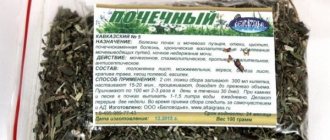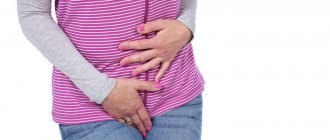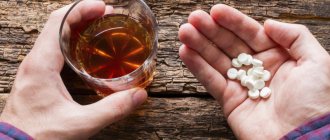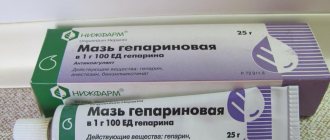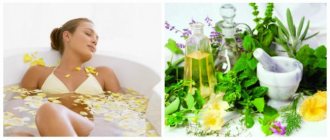Kidneys are the filtering station of our body. Two small fist-sized organs move tens of liters of blood every minute. About a million nephrons continuously remove excess fluid and toxic substances dissolved in it, formed as a result of vital activity. What if there is a failure? Together with the bloodstream, decay products are carried throughout the body, poisoning every cell. That is why it is so important to diagnose and treat diseases of the main “filter” in a timely manner, including with the help of herbal renal infusions, which have significant healing potential.
Progressive kidney diseases lead to poisoning and death of the body
Description and positive qualities of herbal tea for the kidneys
Almost every medicinal kidney tea contains the main component orthosiphon, which is also called “cat’s whisker”. What else does kidney tea contain besides the main ingredient? The following herbs can be found in the medicinal collection:
- St. John's wort;
- bearberry;
- lovage;
- lingonberry leaves;
- series;
- parsley root;
- sage;
- strawberry leaves.
These plants are mixed in a certain proportion. The main medicinal properties of the drink:
- Stops and prevents the spread of the inflammatory process.
- Kidney tea has a diuretic (diuretic) effect, promoting improved removal of excess water and toxic compounds from the body.
- Has antimicrobial properties. Prevents the development of pathogenic microflora.
- Eliminates pain spasms and discomfort.
- Relaxes smooth muscles.
- Increases the flow of bile.
- Stimulates the production of gastric juice.
- Normalizes appetite.
Additionally, the composition helps saturate the body with useful vitamins, micro and macroelements, as well as potassium salts.
Kidney herbs: medicinal properties
Thousands of years of experience in herbal medicine have made it possible to single out from the variety of medicinal plants those that help with kidney diseases. Conventionally, they can be combined into three groups.
- Diuretic plants are natural diuretics that irritate the renal pelvis and increase the formation and secretion of urine. Excess salt and toxic substances are removed along with the liquid.
- Anti-inflammatory herbs have antibacterial, antiseptic, antimicrobial properties, inhibit pathogenic microflora and relieve inflammation.
- Healing herbs that prevent the formation of kidney stones. It is wrong to think that with their help you can cure urolithiasis. But if the process has just begun, such diuretics will also help prevent stagnation and wash away the sand.
A harmless disorder of salt metabolism leads to the formation of kidney stones
Let's consider common kidney herbs, the healing properties of which have been proven by traditional medicine and clinical studies.
- St. John's wort is a plant with multiple pharmacological properties, a diuretic, anti-inflammatory, antimicrobial herbal remedy. As part of kidney teas, it effectively fights inflammatory processes, cystitis, and pyelonephritis. Decoctions are given to children for bedwetting.
Herb for 99 diseases - this is what traditional healers call St. John's wort
- Bearberry has a pronounced diuretic effect, so it is recommended to use it only as part of preparations.
- Lingonberry (leaves) is useful for diseases of the bladder and kidneys. In addition to diuretic properties, it has an anti-inflammatory and disinfectant effect, and has a rich vitamin composition that helps strengthen the body.
- Knotweed is recommended to be included in preparations for kidney and bladder stones. It has a diuretic, stone-crushing, anti-inflammatory effect.
- Calendula (flowers) is a universal “phytodoctor” with a powerful anti-inflammatory effect, a natural antispasmodic. Used to relieve inflammation of the genitourinary organs.
Two in one - a garden flower and a medicinal plant that should be in every first aid kit
- Nettle (leaves) are used to treat pyelonephritis, glomerulonephritis, and bladder inflammation. This is a good diuretic, choleretic and hematopoietic plant, has a rich vitamin composition, removes excess sugar, and strengthens the body.
- Corn silk is a common and effective component of herbal remedies for kidney stones. The diuretic properties of the plant are used to reduce edema of renal and cardiac origin, with dropsy.
Corn “hair” is the same silk that is also used for weight loss
- Peppermint is included in kidney teas as an anti-inflammatory ingredient with analgesic properties.
- Horsetail prevents congestion and the formation of stones in the bladder, normalizes electrolyte metabolism, and prevents the deposition of salts in the joints.
- The herb, which grows in the subtropics, is considered one of the best natural diuretics, as it contains a lot of potassium (it is washed out of the body along with urine). Used in complex preparations for cystitis, pyelonephritis, and kidney stones.
Indications for use of kidney tea
Based on the many positive properties for the body, the use of kidney tea is varied. It is widely used for dysfunction of the excretory system and for the appearance of third-party diseases caused by its disruption. The main indications for use include:
- inflammatory process in the kidneys (cystitis, urethritis);
- stony deposits in the bladder, ureters;
- high blood pressure;
- gout;
- high blood sugar;
- problems related to the functioning of the cardiovascular system;
- obstructed outflow of fluid in the body.
Herbal tea can also be consumed in case of kidney failure, but with extreme caution and after examination and doctor’s recommendations. In any case, it is worth remembering that for each disease, a medicinal drink is prepared and taken using a special technology. The amount of product consumed and the time of administration depend on the individual characteristics of the patient.
Before making an appointment, please pay attention to the following aspects:
- health and general well-being:
- what kind of life a person leads;
- patient's age;
- the presence of other diseases and abnormalities.
Orthosiphon stamen – kidney tea
In this article I will talk about a unique medicinal plant that is successfully used to treat many kidney diseases (and not only kidneys). We will talk about the orthosiphon staminate. Or, as it is also called, kidney tea.
Orthosiphon helps restore kidney function, relieves swelling, “cleanses the body” and “removes salts from the body” - chlorides, urea and uric acid. Improves the functioning of the gallbladder.
That is, this medicinal plant has multifaceted beneficial effects. But at the same time, modern doctors, for some obscure reasons, very rarely prescribe it to their patients. Most likely, many doctors simply “forgot” about orthosiphon.
You and I need to correct this injustice - let's “remember” this unique and very useful medicinal plant.
For what diseases does Orthosiphon stamen - kidney tea help:
Most manufacturers (or, more correctly, packagers of this herb) write that the main indications for the use of orthosiphon are:
- edema arising due to impaired renal function, or due to circulatory failure (cardiac edema);
- urolithiasis - sand and kidney stones;
- cholecystitis , cholelithiasis.
In my opinion, this list is unfairly incomplete. I have studied a lot of scientific literature on Orthosiphon stamen, in addition, I have been using it regularly for many years, and have been prescribing it to my patients for a long time.
And this is what I can add. In addition to the above diseases, orthosiphon helps with a variety of kidney diseases: for example, pyelonephritis and urinary tract infections
Often, orthosiphon also helps with kidney cysts - if the appearance of a cyst (or cysts) is caused by congestion in the kidneys, or hydronephrosis, or previous infectious and inflammatory diseases of the kidneys that were not completely cured or were treated incorrectly.
Very often, orthosiphon helps with cystitis. It also helps with gout - since orthosiphon enhances the excretion of uric acid from the body.
For some people, Orthosiphon helps to lose weight - albeit not very much, but using it can help you lose a couple of kilograms with health benefits.
Additionally, it can help treat hypertension. Very often, hypertension begins precisely because of poor kidney function. And in this case, orthosiphon helps restore kidney function and reduce high blood pressure.
And oddly enough, the use of orthosiphon helps many patients lower blood cholesterol levels.
Here is a rather large list of useful effects.
Does this medicinal plant have any disadvantages? — for example, any special side effects and contraindications?
There are VERY few of them.
Often, manufacturers generally write: Side effects - Not detected. Contraindications for use - Not identified.
But this, of course, is not entirely correct. In fact, there are contraindications, although they are few.
Contraindications to the use of Orthosiphon:
Hypersensitivity to the drug is rare, but if you have a negative reaction to the components of this plant, then it is better not to use it. And, of course, you do not need to take Orthosiphon if you are allergic to it. However, this rarely happens.
with caution in cases of hypotension (low blood pressure) and in persons with diseases of the nervous system. And also for gastritis with high acidity and stomach ulcers - since the use of orthosiphon can (infrequently) provoke increased secretion of gastric juice.
Side effects when using orthosiphon are very rare. But you still need to keep in mind that a very small percentage of patients may have allergies; and heartburn is also possible. In addition, you need to remember that orthosiphon can reduce blood pressure; This is good for hypertension, but not so good for hypotension and low blood pressure.
Is it possible to use orthosiphon to treat children? Some manufacturers write that it is possible. But some write that it should not be used by children under 12 years of age. So this question remains open.
Can Orthosiphon be used by pregnant women? And nursing? Here opinions also differ. Most often, manufacturers write that orthosiphon is not prohibited during pregnancy. And even useful. But only on the recommendation of a doctor, with a period of use of no more than 2-3 weeks.
However, recently an opinion has emerged that orthosiphon (kidney tea) is contraindicated during pregnancy and breastfeeding. And this happened because under the name “Kidney Tea” they began to sell a variety of mixtures of herbs, many of which were actually prohibited during this period.
If we talk specifically about Orthosiphon stamen, and not about some other “kidney teas,” then during pregnancy and breastfeeding, orthosiphon can bring noticeable benefits. It helps to cope with swelling of the legs, which often occurs after the second trimester, eliminates bags under the eyes and improves the general condition of pregnant women.
However, remember the 2 most important rules for pregnant and lactating women: 1. Orthosiphon should be used with caution, strictly according to the instructions and, of course, under the supervision of your doctor! 2. When purchasing it, you need to make sure that you are purchasing Orthosiphon stamen, and not some other remedy, which is also referred to as “kidney tea”.
How to take Orthosiphon correctly for treatment:
You need to buy Orthosiphon stamen leaves, also known as Kidney tea, at the pharmacy. Let me remind you that when purchasing it, you need to make sure that you are purchasing Orthosiphon stamen, and not some other remedy, which is also referred to as “kidney tea.”
Orthosiphon can be sold in filter bags, or in bulk, in cardboard packaging. It can be used in both forms.
COOKING.
If you bought Orthosiphon in filter bags: 1 filter bag (1.5 g) should be placed in an enamel or glass container, pour 100 ml of boiling water (about half a glass), cover with a lid and leave for 15 minutes. After 15 minutes, squeeze out the bag and throw it away. And add a little water to the resulting infusion to get the initial 100 ml (half a glass).
HOW TO DRINK: The resulting medicine is drunk warm. It is advisable to shake it a little before doing this. You need to take half a glass 2 times a day, about 20–30 minutes before meals. But it can also be done while eating.
If the medicine causes you a strong diuretic effect, do not drink it in the evening - so as not to get up at night to go to the toilet.
Duration of treatment is 2–3 weeks, maximum 4 weeks.
You don’t need to take it for more than 1 month in a row - then you need to take a break for at least 2-3 months. After which the course of treatment with orthosiphon - 2-4 weeks - can be repeated (in consultation with the doctor).
If you bought Orthosiphon NOT in filter bags: The package contains Orthosiphon stamen leaves, from which an infusion is made: 1-2 tablespoons of Orthosiphon leaves should be placed in an enamel or glass container, or even better - in a thermos.
Pour 200 ml (1 glass) of boiling water and leave for 15–30 minutes. Then strain, for example, through a tea strainer. The remaining raw leaves need to be squeezed out - using the same strainer.
As a result, you will get a little less than a glass of infusion. Now you need to add a little boiled water to this infusion - so that the total is exactly 1 glass of infusion.
Squeezed raw leaves should be thrown away and should not be reused.
Treatment with this infusion is carried out in the same way and in the same doses as in the first case - when using filter bags (see above).
Special instructions:
It is advisable to prepare an infusion of kidney tea for a maximum of 1 day. That is, it cannot be stored for a long time. As a last resort, the prepared infusion can be stored in a cool place for up to 48 hours, but not longer.
***
The author of the article is Dr. Evdokimenko©. Published 05/18/2019. Attention! When copying or reprinting materials, be sure to indicate the source! All articles, news and book chapters are protected by copyright P.V. Evdokimenko©
Proper intake of kidney tea
Depending on the type of disease, kidney tea is taken according to different schemes. Let's consider for what diseases and in what dosage the drink is taken.
Infusion without cooking
The drink is recommended for use in case of inflammation in the bladder and in the presence of rocky tumors in the urinary system. Prepare as follows:
- Finely chop orthosiphon stamen (3 g), pour into a suitable container, pour in 250 ml of boiling water;
- cover and leave for 15 minutes, after wrapping it in a warm blanket or shawl;
- strain the infusion, add liquid to the original volume;
- take 130 ml of a healthy drink before meals twice a day, preferably at the beginning and end of the day.
The course of admission is 30 days, with a mandatory break of 7 days.
Decoction
This healthy drink option copes well with high blood pressure, excessive swelling, and kidney diseases.
You will need to take:
- herbal tea – 15 g;
- hot, boiled liquid – 530 ml.
Combine prepared ingredients in a small saucepan. Stir and place in a water bath. After the liquid boils in the pan, simmer for 5 minutes.
Carefully remove from heat, close the lid tightly and leave on the kitchen counter. The product will infuse for 4–4.5 hours. Strain through a sieve and additionally through cheesecloth. The dosage is 100 ml of warm decoction before meals twice a day.
